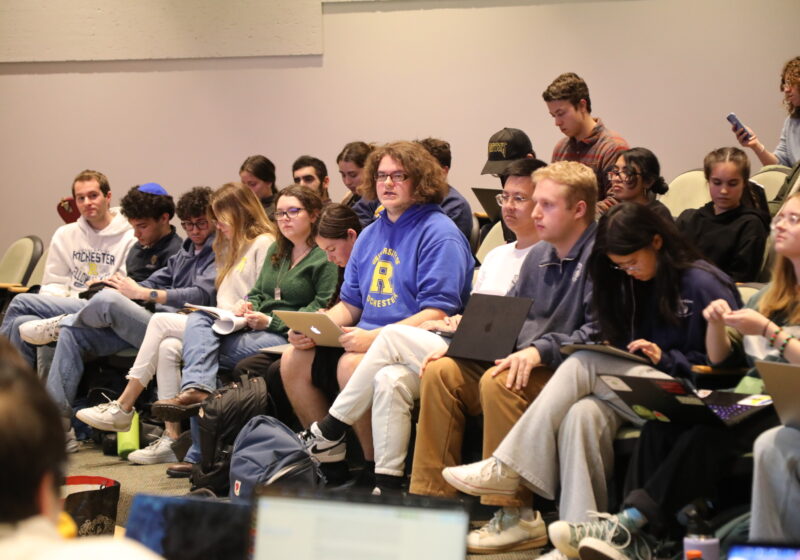
Drue Sokol, Photo Editor
I recently read that one of the best ways to sustain a newspaper’s readership is by informing readers, quite straightforwardly, about the amount of work that goes into creating the very product they hold in their hands. It goes without saying that providing valuable, worthy content is foremost to upholding reader loyalty, but lately I have sensed a sort of dismissal from readers and nonreaders alike regarding the effort devoted to a student newspaper such as the Campus Times.
I should correct myself — and pardon readers as well — in that perhaps what I am sensing isn’t some sort of dismissal, but rather a lack of awareness or a version of apathy that comes with being uninvolved with something. Over the years, I’ve seen firsthand that readers don’t particularly care to read a newspaper unless they are photographed or directly mentioned or quoted in an article.
However, that is something I saw from my former high school counterparts, so I trust that this does not happen at UR. My worries stem from the fact that a good number of CT readers hardly know a thing about the amount of work that goes into producing the newspaper.
Before I go on, I want to note that, when this idea of informing readers about the process to produce the paper was suggested in the CT newsroom previously, it was shot down as a “self-indulgent” thing to do. In one respect, this is a valid argument. In another light, however, I don’t think it gives justice to the countless hours of work that staff members invest, hours that would otherwise go unacknowledged and, in my opinion, undervalued.
As a copy editor, I get off easy — so, ironically, I’m not exactly one to divulge information about all the labor. The current copy editing staff usually leaves the CT office around 3 or 4 a.m., catches a few hours of sleep before 9:40 a.m. class and resume the rest of Thursday a little restlessly. The other editors, who lay out and design pages for the newspaper, sacrifice a full night’s worth of slumber and at times skip class, only to finalize the paper around 10 or 11 a.m.
This kind of sacrifice from such dedicated people often goes unnoticed. Naturally, however, the staff understands and is prepared for this. Much of the dedication and motivation to continue derives from a deep love for what we do. Editors plan, research, compile, edit and design pages not because they have to — though that is certainly one of the reasons — but because they enjoy taking part in a creation meant for the benefit and education of the community.
Even gauging the number of readers can be difficult. As someone who works on a separate publication — a newsletter, more specifically — I see this from the perspective of multiple publications. However, maybe that’s just me personally; maybe I just can’t feasibly extract a realistic number of how many people read what I publish.
Either way, I know that what I write matters when I receive reactions and input. Feedback is essential for any organization to survive, especially for newspapers that are currently facing an imminent decline. Writers craft articles with the intent of generating discussion, and, when this doesn’t happen, how can a writer determine whether anyone cares? Even a brutal critique conveys that the time invested in the work produced an emotion, if nothing else.
However, this is not only a matter of whether or not the CT receives feedback. It is also a question of how informed UR, as a community, desires to be. Just as a newspaper is strengthened by suggestions and a dialogue between writers and readers, a community is strengthened by not only its willingness to stay informed, but also by its open discussion of problems faced by the community as a whole.
If members of the community fail to stay informed and withdraw from discussing problems, the path forward is considerably more difficult to navigate. The quality of a newspaper is ultimately contingent on reader feedback and editorial elbow grease, and we all need to keep this in mind the next time we decide whether to pick up a copy of the Campus Times.
Kerem is a member of the class of 2015.


